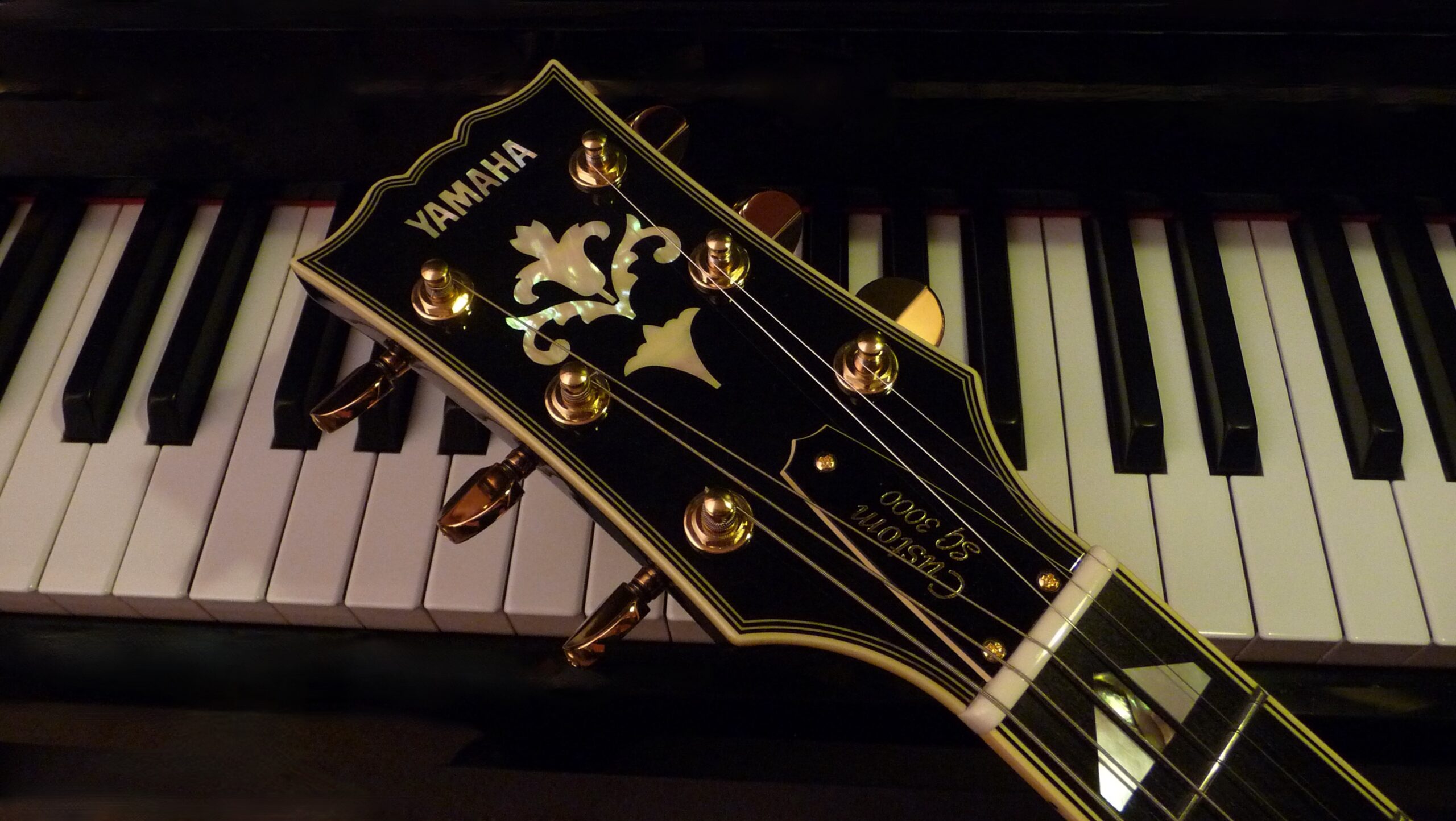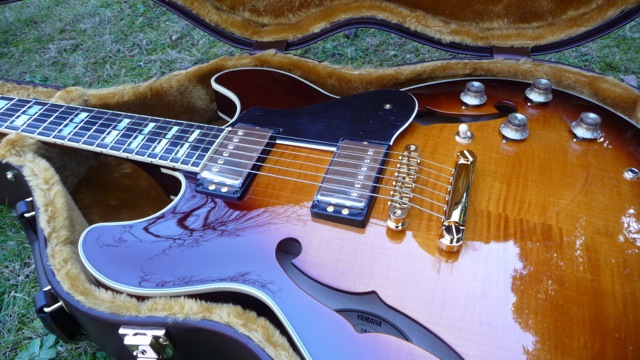With most instruments, the choice comes down to two factors – quality and price. You can buy a cheap alto saxophone, a good student alto saxophone, a good semi-professional alto saxophone or an excellent professional alto saxophone. But at the end of the day, they are all alto saxophones!
This is also true with regards to guitars, but guitars have another complication…..what ‘type’ of guitar will you purchase when you start guitar lessons…..and I don’t mean what ‘brand’ of guitar.
Without going into every possibility, there are three basic types of guitars: nylon-string acoustic, steel-string acoustic and solid body or semi-hollow electric. The differences between these types of guitars are quite significant and make a big difference to a beginner student regarding ease of playing. Unfortunately, these differences are never explained at the music shop and so invariably, students buy a guitar based on a combination of old wives’ tales, misinformation and price. The vast majority of the students who have learnt at Melbourne School of Music in the past have made the mistake of buying a guitar before beginning guitar lessons, without any real knowledge of the differences and just how important these differences are when you a beginner trying to learn. Invariably, this has resulted in them having to purchase another guitar once all the differences were explained. My advice to anybody contemplating learning to play the guitar is to firstly find a professional teacher (which is much more difficult than people think) and then to ask for their advice. Ask them to explain why they would recommend a particular guitar.
As a starting point, here are some of the key differences between the different guitar types.
1. Nylon-string acoustic guitars
These guitars are really designed to play Classical guitar on, not modern styles of music, but often these guitars are recommended as suitable guitars for beginners to start with because of price. You can buy a cheap Valencia for $110. As well as the price incentive, students are often told that nylon-string guitars are softer on the fingers and you don’t need an amplifier…….again a price consideration. What beginners are not told however, is that nylon-string guitars have a much thicker and wider neck – 52mm wide compared to 43mm on an electric or steel-string guitar. They are also not told that nylon-string guitars have a much higher action, which is the height of the string above the fretboard. These two things are FAR more important considerations than price or how soft the strings are on the fingers.
2. Steel-string acoustic guitars
Once again people are often sold these guitars on the fact that you can take them camping and you don’t need an amplifier. But again people are not told that steel-string guitars come with 12-gauge strings, whereas electric guitars come with 9 or 10-gauge strings. The gauge of the string is how thick the strings are. 12-gauge strings are much thicker than 9 or 10-gauge strings, so the strength required to press the string down onto the fret is considerably more. Most beginners will be able to play open chords on a streel-string acoustic, but when it comes to playing bar chords…..good luck! Also, it is not an argument to say ‘but Tommy Emmanuel plays a steel-string acoustic’, the fact is that you are not Tommy Emmanuel and you do not have his hands and you probably don’t have his strength. From my 40+ years of experience, the vast majority of students will never be able to play bar chords on steel-string acoustic guitars.
Apart from having a much heavier string gauge, steel-string acoustic guitars also come with a higher action – which once again makes it much more difficult to play.
The last point (and by no means the least important!) is that steel-string acoustic guitars come in different sizes. The three main sizes are OM/000 (triple zero), dreadnought and jumbo. Once again, what is not explained to a beginner is that when you walk into a music shop, the vast majority of the steel-string acoustic guitars you will see hanging on the walls are dreadnoughts. You may never see an OM/000 and you certainly won’t see a jumbo. So, the dreadnought is what most people end up buying. Unfortunately, the depth of the dreadnought is around 12.4 cm at the widest point of the body….so it is a very big and deep-bodied guitar. When a beginner sits with a dreadnought on their lap and tries to see where their fingers are on the fretboard, so that they can see what string and what fret they are playing, they will need a neck extension…and I don’t mean a neck extension on the guitar!
3. Electric guitar
Contrary to the common wives’ tale that everybody should start on an acoustic, I have always recommended electric guitars for beginners. They have no disadvantages, other than that they are more expensive and you will be required to purchase an amplifier in order to hear the guitar properly. But the advantages of going for electric guitar lessons are many. They have lighter gauge strings which are easier to press. They have a much lower action when the guitar is set-up properly, which makes it easier to play. Finally, they have a much slimmer body, which makes them a lot more comfortable to hold on your lap and makes it possible to see where your fingers are on the fretboard.
The above is just a basic guide. There are many, many more things that you will need to learn about your instrument. Don’t make the mistake of underestimating how big a difference a guitar can make to your learning and how important the choice of guitar will be to your enjoyment and learning experience.
As with choosing a teacher, price should not be your first consideration when purchasing a guitar – it should be your last. Getting the best teacher and the best guitar for you should be your first priority.
Finally, when choosing an electric guitar, there are many other considerations in addition to the ones outlined above that you need to be made aware of. It is not just about the colour or about which guitar your favourite guitar hero plays!
For more information or to sign up for electric guitar lessons in Melbourne, get in touch with us at your convenience.



